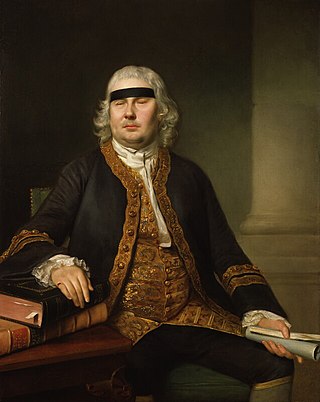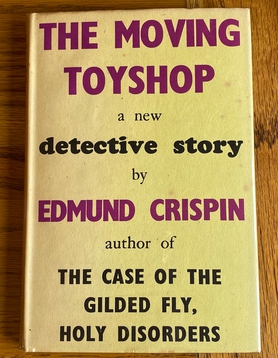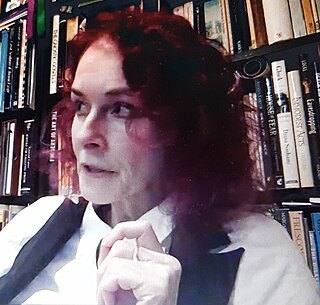Miss Jane Marple is a fictional character in Agatha Christie's crime novels and short stories. Miss Marple lives in the village of St Mary Mead and acts as an amateur consulting detective. Often characterised as an elderly spinster, she is one of Christie's best-known characters and has been portrayed numerous times on screen. Her first appearance was in a short story published in The Royal Magazine in December 1927, "The Tuesday Night Club", which later became the first chapter of The Thirteen Problems (1932). Her first appearance in a full-length novel was in The Murder at the Vicarage in 1930, and her last appearance was in Sleeping Murder in 1976.

Northanger Abbey is a coming-of-age novel and a satire of Gothic novels written by the English author Jane Austen. Although the title page is dated 1818 and was published posthumously in 1817 with Persuasion, Northanger Abbey was completed in 1803, making it the first of Austen's novels to be completed in full. From a fondness of Gothic novels and an active imagination distorting her worldview, the story follows Catherine Morland, the naïve young protagonist, as she develops to better understand herself and the world around her.

Elizabeth MacKintosh, known by the pen name Josephine Tey, was a Scottish author. Her novel The Daughter of Time, a detective work investigating the death of the Princes in the Tower, was chosen by the Crime Writers' Association in 1990 as the greatest crime novel of all time. Her first play Richard of Bordeaux, written under another pseudonym, Gordon Daviot, starred John Gielgud in its successful West End run.

Valarie McDermid, is a Scottish crime writer, best known for a series of novels featuring clinical psychologist Dr. Tony Hill and his collaborators in the police department. Her work is considered to be part of a sub-genre known as Tartan Noir. This series was adapted for television, running from 2002 to 2008, and known as Wire in the Blood.

On Her Majesty's Secret Service is the tenth novel and eleventh book in Ian Fleming's James Bond series. It was first published in the United Kingdom by Jonathan Cape on 1 April 1963. Fleming changed the formula and structure from the previous novel, The Spy Who Loved Me, and made a determined effort to produce a work that adhered to his tried and tested format. The initial and secondary print runs sold out quickly, with over 60,000 copies sold in the first month, double that of the previous book's first month of sales. Fleming wrote the novel at Goldeneye, his holiday home in Jamaica, while Dr. No, the first entry in the James Bond film series by Eon Productions, was being filmed nearby.

Sir John Fielding was an English magistrate and social reformer of the 18th century. He was the younger half-brother of novelist, playwright and chief magistrate Henry Fielding. Despite being blinded in an accident at the age of 19, John set up his own business and, in his spare time, studied law with Henry.

Iain Alan Sutherland Glen is a Scottish actor. He has appeared as Dr. Alexander Isaacs/Tyrant in three films of the Resident Evil film series (2004–2016) and as Jorah Mormont in the HBO fantasy television series Game of Thrones (2011–2019). Other notable film and television roles include John Hanning Speke in Mountains of the Moon (1990), Larry Winters in Silent Scream (1990) for which he won the Silver Bear for Best Actor at the Berlin International Film Festival, Manfred Powell in Lara Croft: Tomb Raider (2001), Brother John in Song for a Raggy Boy (2003), the title role in Jack Taylor (2010–2016), Sir Richard Carlisle in Downton Abbey (2011), James Willett in Eye in the Sky (2015), Bruce Wayne in Titans (2019–2021), Magnus MacMillan in The Rig (2023–2025), and Dr. Pete Nichols in Silo (2023–2025).

Wire in the Blood is a British crime drama television series, created and produced by Coastal Productions with Tyne Tees Television and broadcast on ITV from 14 November 2002 to 31 October 2008. The series is based on the Tony Hill and Carol Jordan series of novels by Scottish writer Val McDermid. It features university clinical psychologist, Dr Anthony "Tony" Valentine Hill, who taps into his own dark side to get inside the heads of serial killers. Working with Carol Jordan and other detectives, Hill takes on tough and seemingly impenetrable cases in an attempt to track down the killers before they strike again.
Philip MacDonald was a British-born writer of fiction and screenplays, best known for thrillers.
Events from the year 1955 in the United Kingdom. The year is marked by changes of leadership for both principal political parties.

The Culture of Manchester is notable artistically, architecturally, theatrically and musically. Despite being the 5th largest city in the United Kingdom by population and the second largest conurbation, Manchester has been ranked as the second city of the United Kingdom in numerous polls since the 2000s (decade), with an influential culture scene helping to elevate Manchester's importance in the national psyche. This has helped the city's population grow by 20% in the last decade, and made the universities the most popular choices for undergraduate admission.
Bruce Alexander Cook was an American journalist and author who also wrote under the pseudonym Bruce Alexander, creating historical novels about a blind 18th-century Englishman and also a 20th-century Mexican-American detective.

The Moving Toyshop (1946) is a work of detective fiction by Edmund Crispin, featuring his recurrent sleuth, Gervase Fen, an Oxford professor of English Language and Literature.

The Mermaids Singing (1995) is a crime novel by Scottish author Val McDermid. The first featuring her recurring protagonist, Dr. Tony Hill, it was adapted into the pilot episode of ITV1's television series based on McDermid's work, Wire in the Blood, starring Robson Green and Hermione Norris.

Rules of Engagement is the eleventh historical mystery novel about Sir John Fielding by Bruce Alexander. The manuscript was unfinished when Cook died in 2003, but his widow, Judith Aller, and writer John Shannon worked together to complete it.
Events from the year 1955 in Scotland.
The 1993 New Year Honours in New Zealand were appointments by Elizabeth II on the advice of the New Zealand government to various orders and honours to reward and highlight good works by New Zealanders. The awards celebrated the passing of 1992 and the beginning of 1993, and were announced on 31 December 1992.

Rosie Garland FRSL is a British novelist, poet and singer with post-punk band The March Violets. In 2023, she was elected a Fellow of the Royal Society of Literature.
Mary Paulson-Ellis is a Scottish writer and novelist. She writes across the genres of literary, crime and historical fiction. Her work has appeared in the Guardian and been broadcast on BBC Radio 4. Her books have received a number of awards. Paulson-Ellis’ first novel, The Other Mrs Walker (2016) became a Times bestseller and was named Waterstones Scottish Book of the Year in 2017.
Karen Pirie is a British crime drama television series based on the Inspector Karen Pirie series of novels by Val McDermid. The first series began on ITV on 25 September 2022 and concluded on 9 October 2022. A second series has been commissioned.












